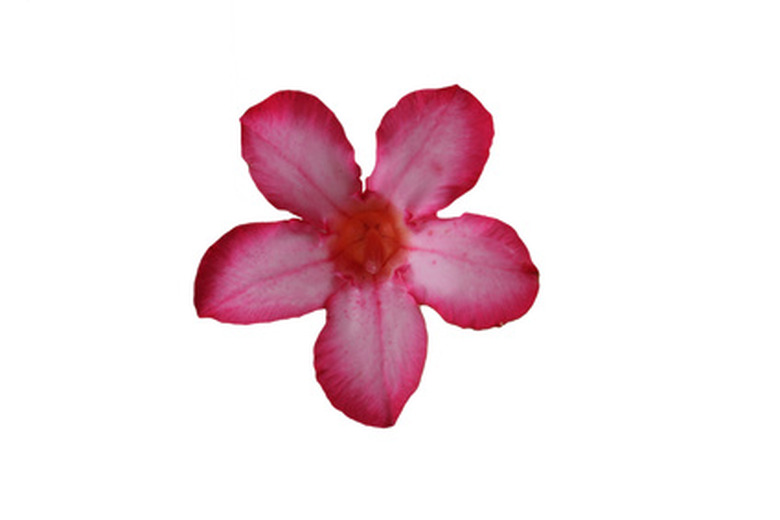Desert Rose Care Instructions
Desert rose, also known as mock azalea or by its Latin name, Adenium obesum, is native to Africa and grows on the Arabian peninsula. Gardeners value the succulent plant for its tolerance of neglect, interesting form and attractive flowers that appear in shades of white, pink and red. Because it is native to warm, dry climates, desert rose cannot tolerate cold temperatures. Gardeners in the United States typically cultivate the plant in containers for fast transport indoors when temperatures drop. Given proper care and attention, desert rose produces an abundance of showy flowers throughout the growing season.
Step 1
Keep desert rose in a location that receives full sun throughout the day, as poor lighting results in leggy growth and a lack of flowers. Maintain a temperature of 70 to 80 degrees Fahrenheit during the day and 65 to 70 degrees Fahrenheit at night, using a thermometer to monitor the temperature near the plant if necessary.
- Desert rose, also known as mock azalea or by its Latin name, Adenium obesum, is native to Africa and grows on the Arabian peninsula.
- Gardeners value the succulent plant for its tolerance of neglect, interesting form and attractive flowers that appear in shades of white, pink and red.
Step 2
Water desert rose when the top inch of potting soil becomes dry to the touch, about once every five to seven days. Reduce the frequency of watering to once every three to four weeks during winter to induce a period of dormancy, which is essential for blooming.
Step 3
Fertilize once per month during spring and summer using an all-purpose houseplant fertilizer. Follow the instructions provided on the package for the best results. Water lightly after applying to prevent injury to the plant's roots. Cease fertilizing during fall and winter.
Step 4
Prune desert rose once each year during early spring just before active growth resumes. Use pruning shears to cut off excessively long and leggy branches and thus encourage fresh, thicker growth and more flowers during the blooming season.
- Water desert rose when the top inch of potting soil becomes dry to the touch, about once every five to seven days.
- Use pruning shears to cut off excessively long and leggy branches and thus encourage fresh, thicker growth and more flowers during the blooming season.
Step 5
Repot desert rose once every two years to refresh the growing medium and allow additional room for growth. Increase the size of the pot by 1 to 2 inches each time you repot. Use a growing medium made of one part potting soil and one part perlite to provide adequate drainage.
Tip
Unglazed ceramic pots are the ideal containers for desert rose, as they allow the soil to dry between waterings. Any available container with good drainage will work, however. Desert rose is hardy in growing zones 10 through 11. Grow it outdoors in the ground only in these areas, where temperatures do not drop low enough to cause permanent damage. Plant the rose in well-drained soil in an area that receives full sun. Water only during periods of drought, or when two weeks have passed without rainfall, and feed monthly from spring through summer.
Warning
Never expose desert rose to temperatures below 50 degrees Fahrenheit, or permanent damage may occur. Use caution when handling desert rose, as its toxic sap can cause serious illness.
Things Needed
- Thermometer
- Fertilizer
- Pruning shears
- Pot
- Potting soil
- Perlite
References
- University of Florida: The Desert Rose, Adenium obesum
- "Tempting Tropicals: 175 Irresistible Indoor Plants"; Ellen Zachos; 2005
